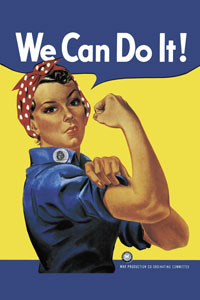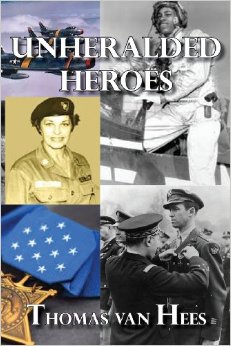by LiveTrue Book Reviewer Melanie Davis
The Introduction to Unheralded Heroes asks, “Are heroes made or do they just become one?” From that question, Thomas van Hees weaves a fascinating book filled with names and stories of those whose actions have qualified them for the title of “hero.” In the course of telling their stories, the question is resolved…and the answer is: both. Heroes are made by being plunged into war and becoming one, not so much out of bravery, but from what they are willing to do in the face of fear.
The book begins by exploring the heroes of the Revolutionary War. The author notes that we actually have very few named heroes from that conflict and suggests this is because the majority of the soldiers were untrained, ill equipped and painfully unsuccessful in most of the battles. They were settlers, farmers, old men and boys, with almost no professionals in their ranks, fighting for an ideology which would in time win against the odds stacked against them, but not before they suffered devastating losses.
While heroes are hard to identify in that first American War, it is interesting to learn that there is an overabundance of heroes from the Civil War. More than three million people participated in the Civil War and 1,522 of them earned the Medal of Honor. This is an exorbitant number considering that, at the time this book was written (2013), there have only been 3,475 total Medals of Honor awarded. Van Hees explains that the Secretary of War, Edwin M. Stanton, promised a Medal of Honor to every man of the 27th Maine Infantry Volunteer Regiment who extended his enlistment. In the end, unable to determine who did or didn’t extend, The War Department forwarded 864 medals to the commanding officer, which was enough for every man in that regiment.
While Unheralded Heroes shares the names and brief stories of many specific individuals, the book also highlights other combined groups of people who have contributed to our hero legacy. There is special honor paid to war photographers, nurses, the families keeping the home-fires burning and even the icons which represent and contribute to our idea of heroism, such as Rosie the Riveter.
Van Hees also explores the role of inanimate heroes. He asserts that key technological advancements have played such a major part in the success of a battle, operation or war, that they deserve credit in a book about heroes. Two examples of the inanimate objects he heralds are: the Tinclad Gunships of the Civil War, which tipped the balance of power on the river and came at just the right time to move large numbers of troops and supplies quickly, and the Precision Guided Munitions, which were introduced during the Gulf Wars, and with highly advanced technology to make it possible to accurately single out enemy targets.
Unheralded Heroes is a must-read for any war history buff. It’s exploration of the word “hero” goes well beyond what readers may have read before, as it redefines who, or what, deserves that title. In the process of showing the ways we have both revered and abused the word, we gain greater knowledge of our American War Legacy. At the end of the book, van Hees playfully leaves us with this parting thought, “Have you helped your fellow man? If you can answer ‘yes’ then the person looking back at you (in the mirror) is definitely a hero. Now, saying all this, I am hungry so I’m going to go make me a hero sandwich!”


Outstanding review of what seems to be an outstanding book. I look forward to reading it and learning more about our nation’s heroes than I already thought I knew.
This sounds like an excellent book, especially to read around Veterans’ Day when we are reminded who our real heroes are. I’m interested in the amount of history it contains as well!
Love that this highlights all of our nations heros, those fighting abroad as well as those supporting back home.